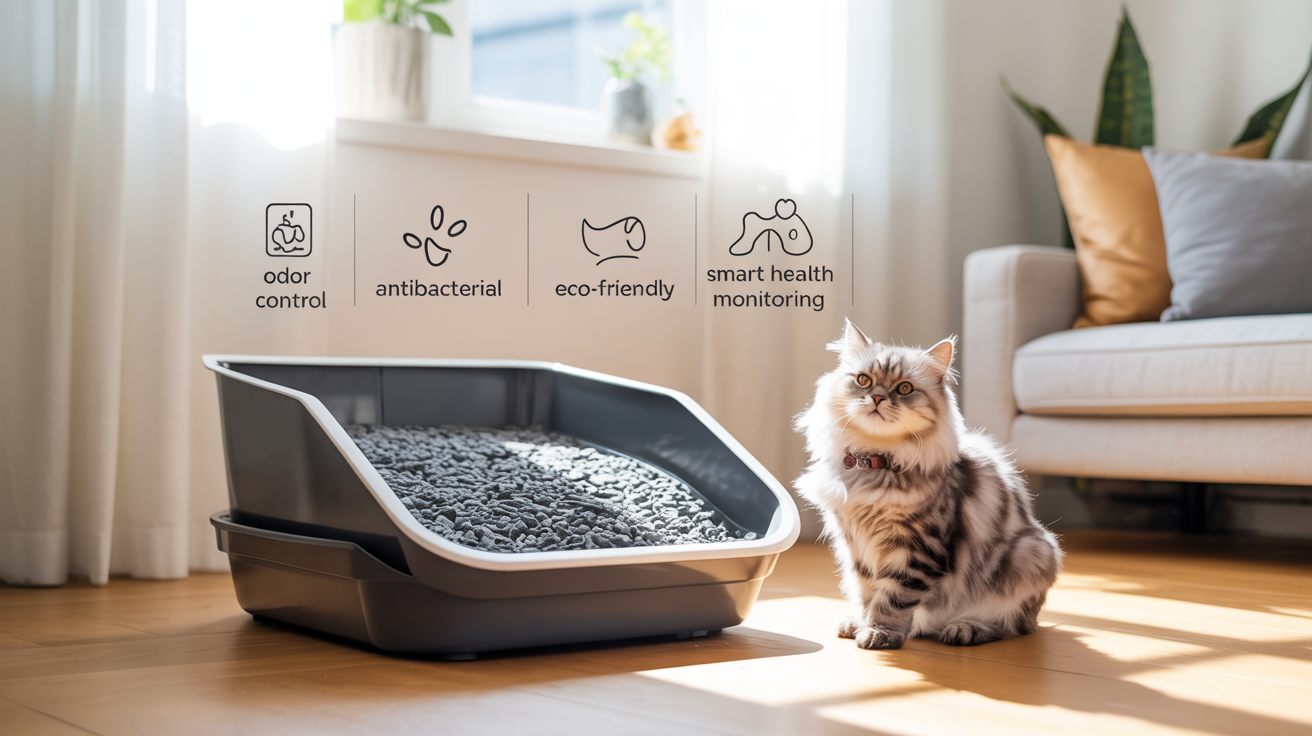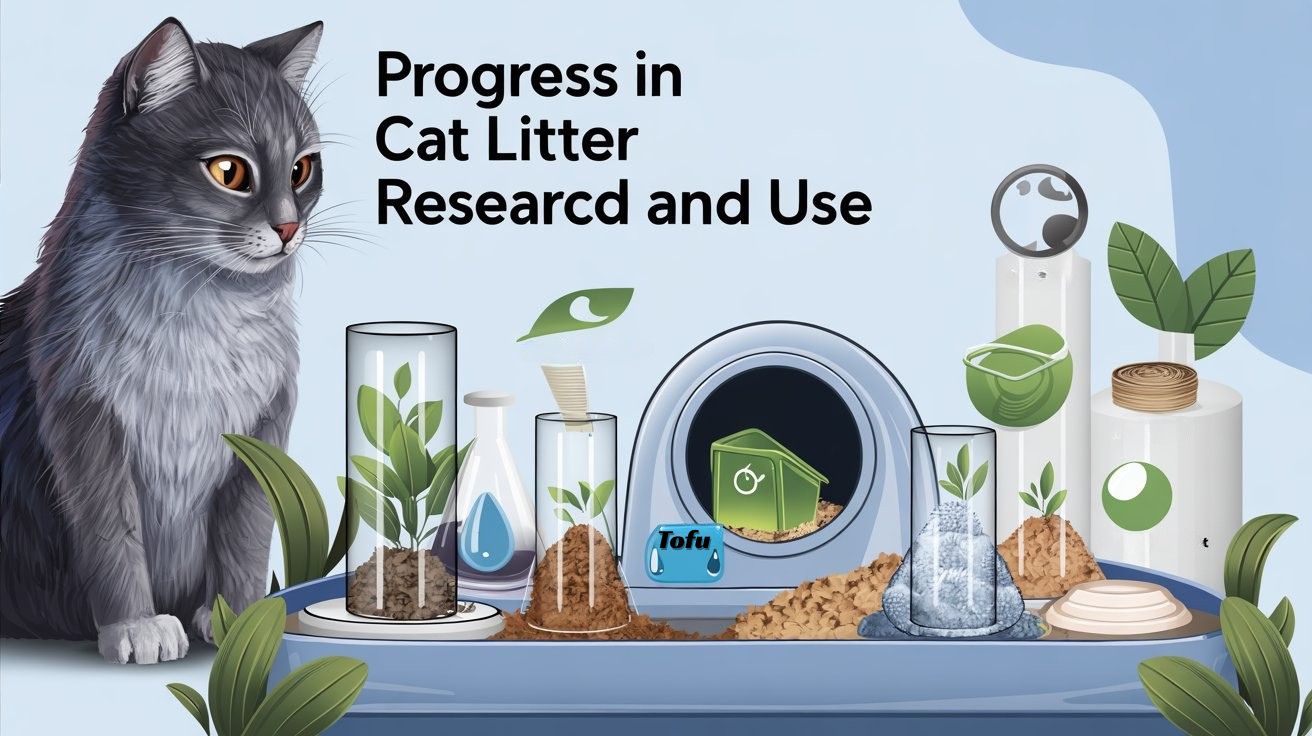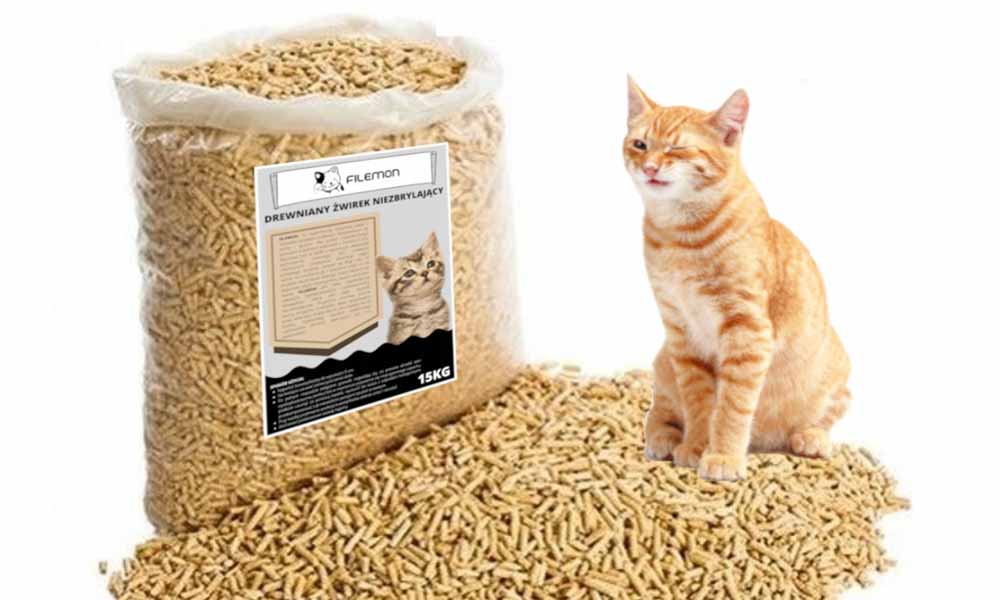By 2021, there were about 58 million pet cats in Chinese cities. Most families use cat litter to handle cat pee and poop, and the market needs more than 7 million tons of it every year. Good cat litter should absorb liquid well, clump tightly, and create little dust.
Common cat litter materials are made from minerals, plant fibers, and silica. But some types, like bentonite or crystal litter, can create dust that harms cats and humans. So, researchers are trying to make safer and more comfortable options.
This article reviews different types of cat litter, focusing on features that people care about: stopping bacteria, removing smells, and helping watch cat health. The goal is to create cat litter that works well and is safe for both cats and people.
1. Types of Cat Litter and Their Pros & Cons
Cat litter is usually grouped by what it’s made from. The main types are:
-
Mineral Cat Litter: Made from clay or sand (like bentonite). It clumps well, controls odors, and is cheap. But it can be dusty and not eco-friendly.
-
Plant-Based Cat Litter: Made from tofu, peanut shells, bamboo, corn, or straw. It’s better for the environment and absorbs liquid well. But it can create dust, doesn’t always remove smells well, and may not clump strongly.
-
Silica Cat Litter: Made from processed silica. It’s very absorbent and dust-free, but it’s expensive and doesn’t clump.
-
Mixed Cat Litter: Combines plant and mineral ingredients. It takes the best features of both—good at absorbing and blocking smells.
2. How Cat Litter is Tested
To check if cat litter is good, scientists look at:
2.1 Water Absorption
This checks how quickly and how much liquid the litter can soak up. Fast and strong absorption helps keep litter dry and reduce smells.
2.2 Clumping Strength
Good clumping makes cleaning easier and traps bad smells. Scientists pour liquid into litter and measure how big and strong the clumps are.
2.3 Dust Levels
Dust can harm cats and humans. They shake the litter in a machine and measure how much dust comes off.
2.4 Odor Control
They test how well the litter removes or traps bad smells like ammonia from cat pee.
2.5 Germ-Fighting Ability
Bacteria can grow in wet litter. They test if the litter stops germs by seeing how well bacteria grow on it in the lab.
3. Current Research and Progress on Functional Cat Litter
Traditional cat litter has some problems: it can smell bad, be hard to clean, and harm the environment. To fix these issues, new types of functional cat litter are being developed. These litters aim to improve your cat’s life and make things easier for owners.
3.1 High Absorbency Cat Litter
This litter soaks up pee quickly and locks in smells. It helps keep the litter box dry and clean. Scientists have made litter from wood and bentonite clay, pressing it into pellets and adding special coatings. These improvements help it absorb faster and clump better.
They’ve also tried mixing tofu leftovers, sawdust, and silica to make litter that clumps and absorbs well. Another method uses treated rice husks that increase the surface area and hold more water. Some researchers even use heat and freeze-drying to make tofu litter powder that absorbs and sticks better.
New materials like corn husks, wheat straw, seaweed, and bamboo are being tested to replace traditional clay. These materials are better for the environment and can hold more liquid and reduce bad smells thanks to their sponge-like structure.
3.2 Antibacterial Cat Litter
Some litters are made to kill germs. This stops bacteria from growing in the litter box, which helps prevent bad smells and keeps your cat healthier.
Some products use chemical ingredients like metal particles, but they can irritate cats. A safer way is to add natural ingredients like dandelion extract, enzymes, or probiotics to tofu litter. These kill harmful bacteria like E. coli and Staph while being safe for cats.
Another example is “tea litter” made with herbal ingredients that fight bacteria long-term. Scientists found that litter with probiotics like Lactobacillus and yeast can break down poop and even heat up like compost to kill germs.
3.3 Deodorizing Cat Litter
This type of litter is designed to remove bad smells from pee and poop.
Adding more than 20% activated charcoal to litter helps remove over 90% of stinky gases like ammonia. When combined with bentonite or special stones, the litter absorbs smells even better. Some also use natural plant extracts like tea, honeysuckle, or dandelion for deodorizing.
New combinations of enzymes and beneficial bacteria can also reduce smell by changing the litter’s microbe balance to stop bad bacteria from growing.
3.4 Health Monitoring Cat Litter
This smart litter changes color when something’s wrong with your cat’s urine. It can check:
-
pH levels: Normal cat urine is slightly acidic (pH 6.0–6.5). If it’s too low or too high, it could mean your cat has a health problem like kidney stones.
-
Protein in Urine: This could mean kidney problems or an infection. Special color-changing materials help detect this.
-
Sugar in Urine: If sugar shows up, your cat might have diabetes. Test strips or enzyme-based litter can detect this.
-
Hidden Blood in Urine: Not visible to the eye, but it could mean a serious problem. Some litter uses chemicals like luminol to detect it.
This type of litter helps owners catch health issues early without a vet visit.
3.5 Attractant Cat Litter
Sometimes cats don’t want to use the litter box, especially when they feel stressed or anxious. This is a common problem in homes with multiple cats.
To fix this, researchers have made cat litter with attractants. For example, ATTRACT litter has added scents that make cats more likely to use the litter box instead of going somewhere else.
Cat pheromones (natural chemicals cats use to communicate) can also help. Mother-cat pheromones or those from other animals can reduce stress and aggressive behavior in cats.
Some litters use natural plant powders, like rose, osmanthus, chrysanthemum, alfalfa, and cranberry fiber. These ingredients help make the litter smell better and attract cats to use it more
4. Summary
In recent years, research on functional cat litter has focused on new materials, stopping germs, removing bad smells, and monitoring cat health. But this kind of cat litter is still in the early stages, and there are some problems and challenges.
Here are the main issues:
-
Many types of cat litter are made from mineral materials, which are hard to throw away and can harm the environment.
-
Plant-based litters like tofu litter are used a lot, but they can be expensive and hard to supply.
-
Some litter contains toxic substances like formaldehyde or heavy metals, which can be unsafe.
-
Harmful germs can grow in used litter and cause diseases.
-
People want litter that works well for a long time, but many products don’t meet that need.
What’s Next for Functional Cat Litter?
-
Use more eco-friendly materials like bamboo fiber, sawdust, paper, seaweed, and tea leaves. This will help reduce harm to the environment and lessen our dependence on a single material.
-
Use new technology to improve how litter works—like better odor control, moisture absorption, and germ-fighting power.
-
Add smart features using Internet of Things (IoT) technology to track the litter’s wetness, cleanliness, and even your cat’s health.
In short, the future of cat litter will focus on:
-
Better user experience
-
Being safer for the environment
-
Stronger functions
-
Personalized, diverse, and smart features for every cat and home
The chickens were vaccinated two more times, each two weeks apart, using 0.5 mL per bird. Then, 21 days after the third shot, their blood was taken, and the serum was separated.
Scientists used the blood to test how well it reacted with 8 different types of inactivated H9N2 bird flu viruses. This test is called a hemagglutination inhibition (HI) test.
From the test results, they found that blood from chickens vaccinated with different virus strains reacted differently to the test antigens. The blood from the BJ23 vaccine strain showed the most consistent and stable results.
This means the BJ23 strain is a good match for many of the newer H9N2 bird flu viruses and could be a strong candidate for making future vaccines.
Table 3 Results of cross-HI test of 8 isolates
| Virus Strain (Antigen) | FJ23 | BJ23 | HB23 | GX23 | HN23 | SD23 | SC23 | WJ57 | Average |
|---|---|---|---|---|---|---|---|---|---|
| FJ23 | 13 | 12 | 9 | 7 | 7 | 8 | 9 | 9 | 9.3 |
| BJ23 | 12 | 11 | 9 | 9 | 10 | 11 | 12 | 10 | 10.5 |
| HB23 | 11 | 10 | 8 | 8 | 9 | 10 | 11 | 10 | 9.6 |
| GX23 | 13 | 13 | 10 | 10 | 11 | 12 | 13 | 10 | 11.5 |
| HN23 | 10 | 10 | 7 | 8 | 10 | 10 | 10 | 9 | 9.3 |
| SD23 | 13 | 12 | 8 | 9 | 10 | 12 | 12 | 9 | 10.6 |
| SC23 | 12 | 12 | 9 | 8 | 11 | 12 | 13 | 10 | 10.9 |
| WJ57 | 9 | 11 | 10 | 9 | 10 | 11 | 10 | 11 | 10.1 |
| C.V. (%) | 12% | 15% | 18% | 15% | 15% | 13% | 13% | 16% |
HI Antibody Titer (log2)
C.V. = Coefficient of Variation
Table 4: Protection Results of BJ23 Vaccine Against 9 H9 Virus Strains
| Vaccine Type | Challenge Virus | Positive Virus Isolation (out of 10) |
| BJ23 Vaccine | A Chicken Beijing 2023 (BJ) | 2/10 chickens virus positive |
| A Chicken Fujian 2023 (FJ) | 1/10 chickens virus positive | |
| A Chicken Guangxi 2023 (GX) | 2/10 chickens virus positive | |
| A Chicken Hebei 2023 (HB) | 1/10 chickens virus positive | |
| A Chicken Henan 2023 (HN) | 2/10 chickens virus positive | |
| A Chicken Shandong 2023 (SD) | 1/10 chickens virus positive | |
| A Chicken Shanxi 2023 (AH) | 1/10 chickens virus positive | |
| A Chicken Sichuan 2023 (SC) | 2/10 chickens virus positive | |
| A Chicken Jiangsu 2012 (WJ57) | 1/10 chickens virus positive |
2) Virus Isolation Results After Infection
On the 5th day after infection, cotton swabs were collected and used to grow the virus in chicken embryos. The results are shown in Table 4. The virus isolation results showed that the BJ23 strain gave strong protection against both similar and different virus strains (protecting 8 out of 10 and 10 out of 10 cases). It also gave good protection against the commonly used H9 type bird flu vaccine (WJ57).
5. Discussion
The widespread outbreak of bird flu has caused major financial losses to the poultry industry. Vaccination is still the main way to prevent bird flu outbreaks. However, the bird flu virus changes easily during its spread — it can mutate or mix genes with other viruses. This leads to many different virus types, making vaccine development very difficult.
In recent years, many studies in China have looked at how the H9 type bird flu virus evolves and changes in its antigens (the parts that trigger an immune response). The H9N2 virus has gone through many changes in our country due to something called “antigen drift.”
These studies found that vaccines may not work well if the virus’s genes or antigens are too different from the vaccine strain. This could be one reason why the H9 virus keeps spreading in China. Some inactivated (killed-virus) vaccines can’t protect chickens well — even against viruses that are very similar or a bit different. But some strains used in vaccines can protect against both similar (same-type) and different (other-type) viruses. This shows that not all virus strains are equal when it comes to making vaccines — they have different immune properties.
Because of this, it’s important to test how well one virus strain can protect against others. This helps scientists choose the best strain to use in vaccines. In our study, we also found differences in how well different virus strains protect against each other. This proves that choosing strains with strong cross-protection is key to making better vaccines.
In this study, we used the BJ23 strain of the H9 virus to make a vaccine. After vaccinating chickens, BJ23 gave strong protection against both the same virus and other different viruses. This means BJ23 has good cross-protective power and can fight a wide range of H9 viruses. So, BJ23 is a good candidate to be used in future bird flu vaccines.




